How to show columns in new playlists
And maybe it’s just me, but it seems to have got worse at gapless playback, too.
No gods, no kings, no billionaires
How to show columns in new playlists
And maybe it’s just me, but it seems to have got worse at gapless playback, too.
Update (Monday, 14:30): I got a text message from Schiphol baggage services yesterday evening to say that they had located the bag, and that it would be delivered today. It has just arrived, with a Bucharest airport security sticker on it. All original contents are all present. So, yay!
There was a period of a few years about a decade ago when Abi and I couldn’t take an airplane trip without the airline losing at least one of our bags. We learned valuable lessons about cross-packing (RAID-0 for luggage), so that the loss of any one suitcase would not be asymmetrically disastrous; about always making sure to put a big address & contacts label (A4 paper + marker pen) inside the suitcase in case the luggage tag gets stripped in transit; and about never checking bags in the first damn place.
On our flight home from Dublin this afternoon, we violated all three rules. We’re now waiting to see if my suitcase reappears. After the luggage belt at Schiphol cleared, there was one black rolling suitcase remaining. It wasn’t mine, but it kinda looked like mine, so Schiphol Baggage Services’ operating assumption is that someone mistook it for their own, and that they will make contact once they discover their error. (It will be the only way for them to get their own bag back, after all.)
We didn’t pack any of our critical IT infrastructure items (laptops, iPads, phones) in the bag, but I was the designated carrier of non-essential-yet-heavy-and-not-actually-needed-on-the-flight-itself stuff. I’m curious to see how many of the following items get returned to us:
Oh and my clothes and toiletries, too. Whatevs.
At Minecon 2012 in Paris we saw plenty of Minecraft/YouTube celebrities get mobbed by their fans. Some of them seemed to be enjoying their fame; others looked haunted by it. All of them were gracious, though. We managed to get CaptainSparklez’ autograph when we spotted him outside a ride at Disney Studios, just before he got swept away by a roving group of fans.
Minecon this year was bigger than 2012 by a substantial margin, but it was also much better organized. As a result of this, access to the celebrities was more tightly controlled, with security shepherding them between events, and formal meet & greet sessions where you could queue up for an autograph and a selfie without crushing them.
Fiona has been a huge fan of IHasCupquake for years, and she was super excited when she discovered that Cupquake was actually going to be at Minecon this year. In fact, most of her con schedule was focused on seeing her at as many panels as she could attend. She went to one on Saturday, and got to ask a question during the Q&A afterwards, but she didn’t get an autograph. On Sunday, Fiona planned ahead so that she could be right at the start of the queue when the doors opened for the Minecraft in Real Life session, and sit near the front of the room. Her hope was to be near the front of the line if Cupquake and Red (her husband) spent some time after the session doing signings.
Unfortunately, Cupquake and Red left almost immediately afterwards for their Meet & Greet session in a different room. By the time Fiona made her way down there, the line was too long, and she didn’t get the chance to speak to her heroine. She put a brave face on it, but she was very disappointed.
A couple of hours later, though, the Minecon magic came to our rescue. The four of us were standing around near the doors of the Expo hall after Fiona had put in another entry for the Minecraft skin creation contest, and I had taken some pictures of Abi, Alex, and Fiona near the Big Ben statue. (Grumble gumble iPhone 4 in less than perfect lighting conditions…)
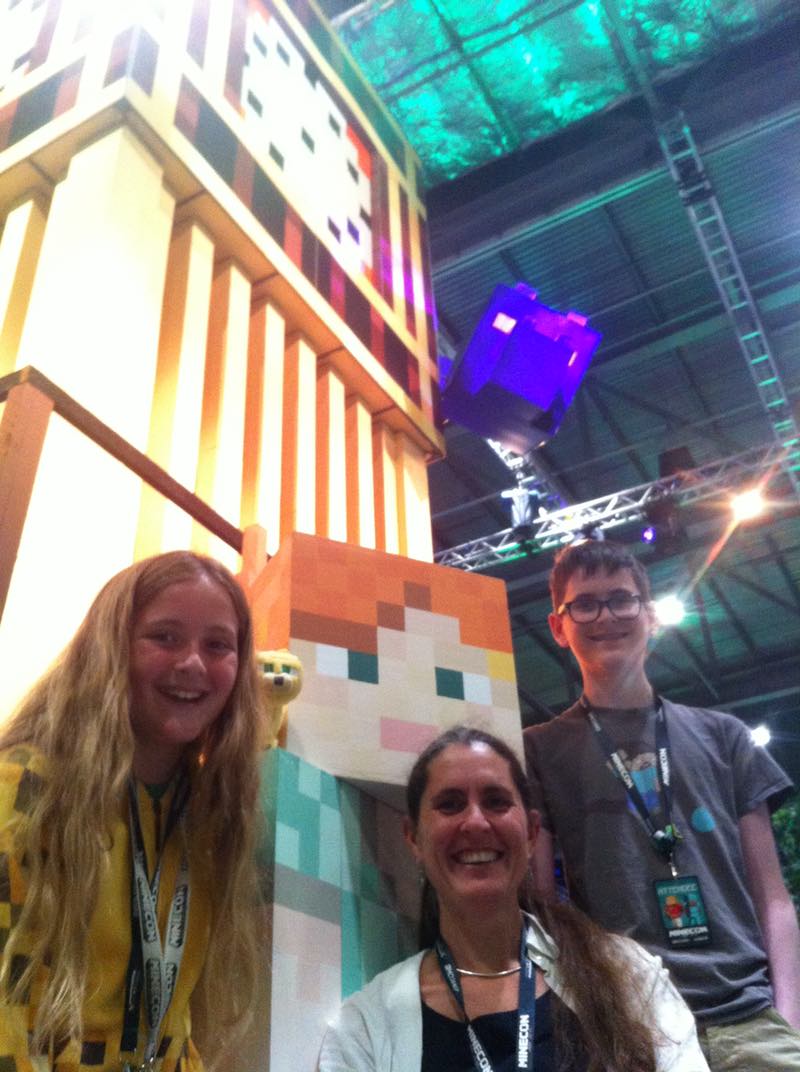
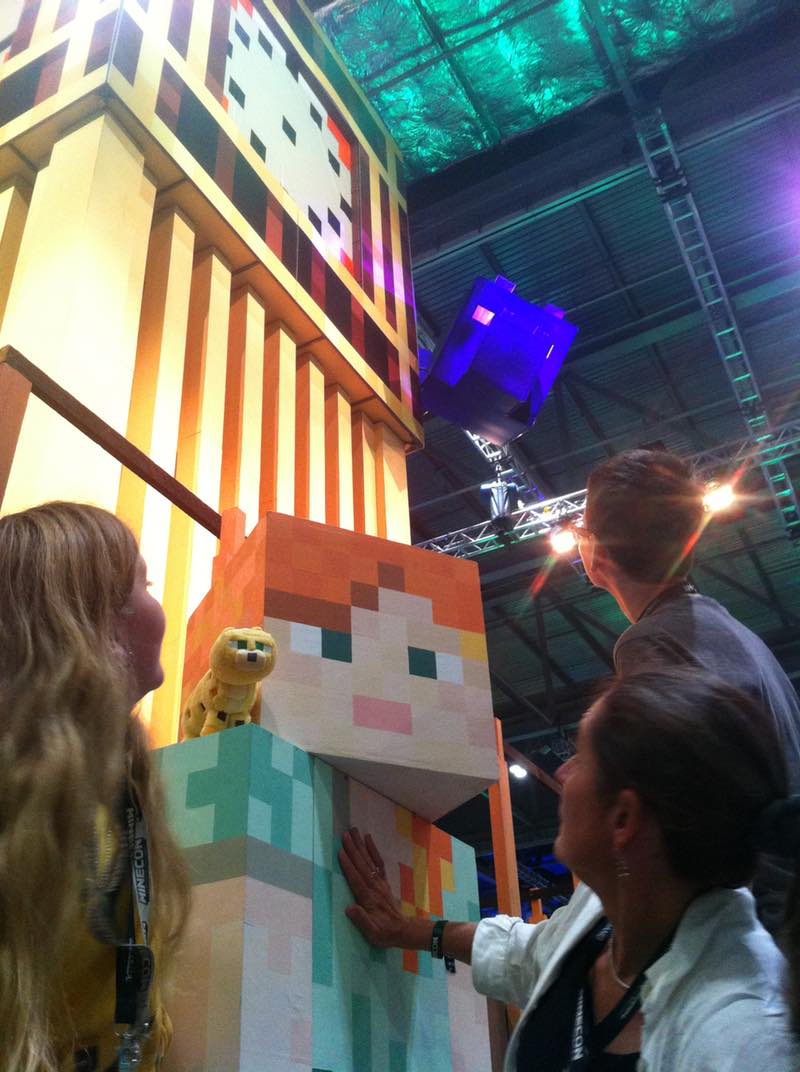
We were just about to head over to the main hall for the closing ceremony when I spotted Cupquake and Red standing just ten meters behind Fiona. I pointed them out to her, and with a barely suppressed squee Fiona yanked us over there, where she got to tell Cupquake just how much she admires her, and got her to sign her autograph book. Abi and I were both effusive in our praise and thanks as well. Even after a long weekend of meeting walls of fans, Cupquake was still grinning and gracious, and genuinely enthusiastic to say hello.
Abi has better photos, but even they don’t manage to capture the full awesomeness of the moment.
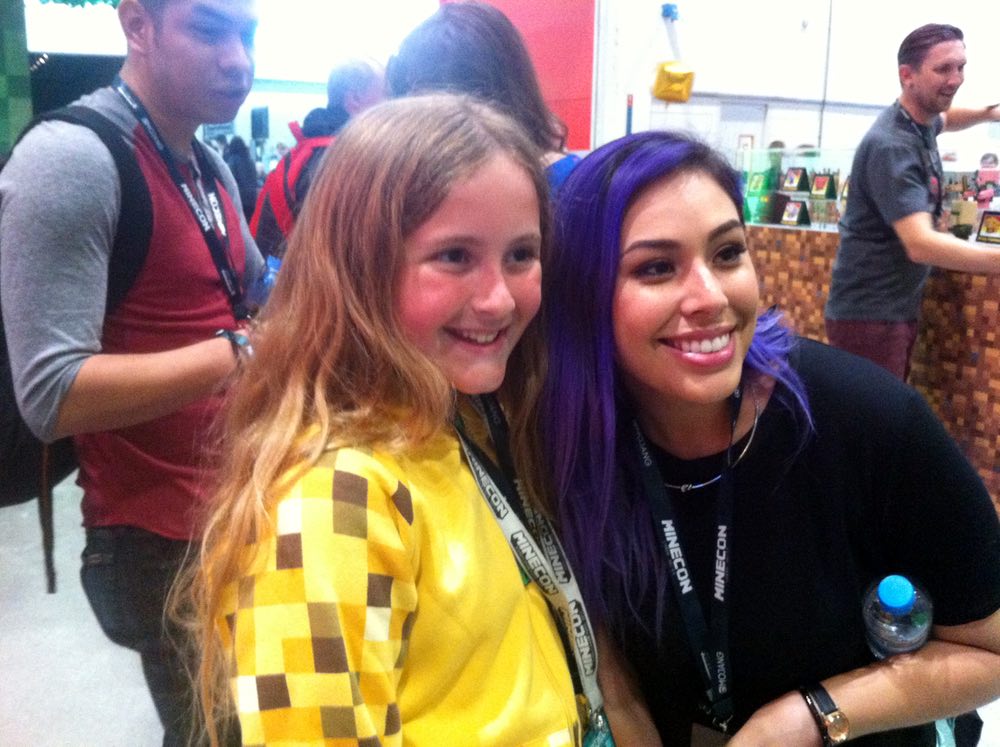
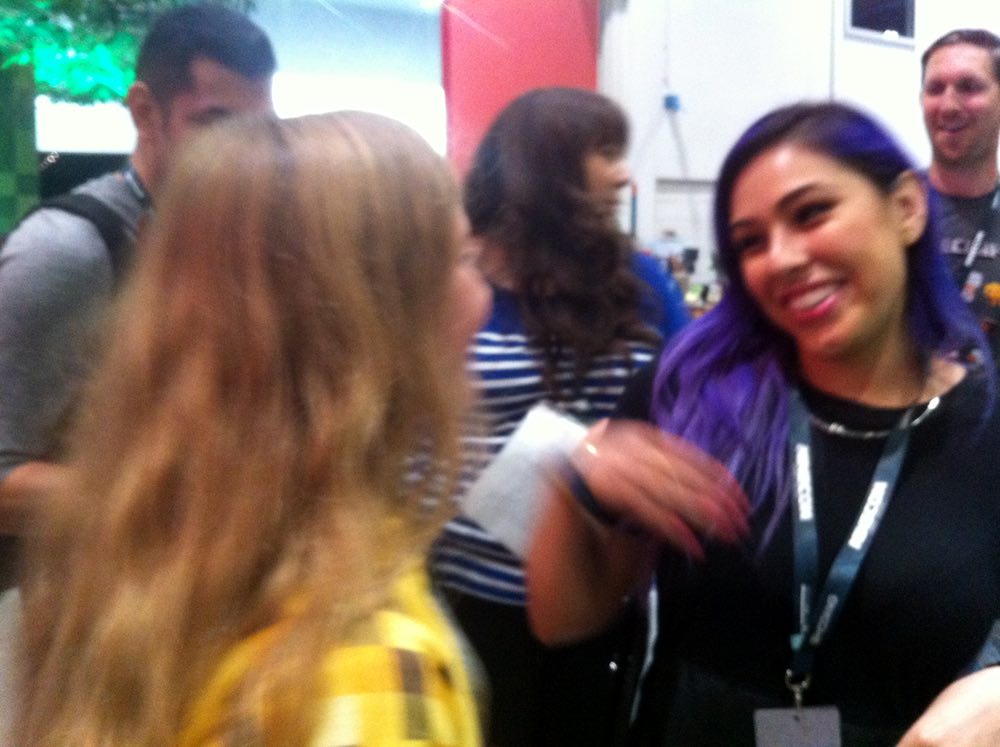
Fiona was close-to-fainting-giddy for a full ten minutes afterwards. We’re talking anime swirly-eyed giddy here. It was special.
On the way back to the hotel (DLR, DLR, C2C, because the District line was closed for engineering works that weekend) very little could compare.
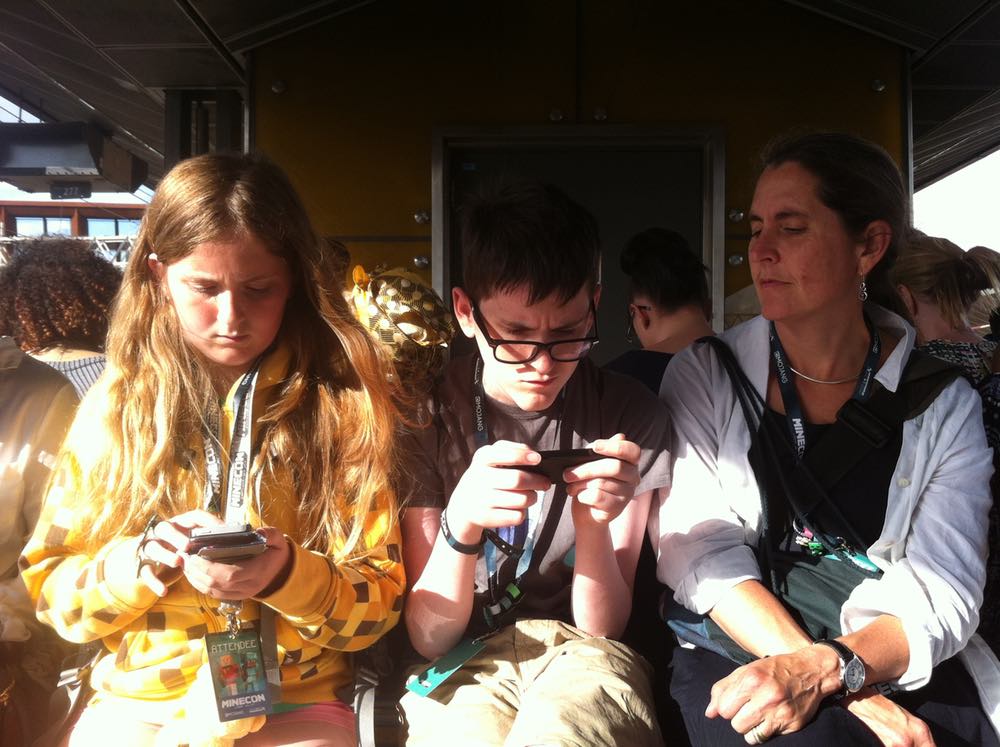

Our last experience of con registration at the ExCeL centre was WorldCon last year. We were fortunate enough to make it through early registration the evening before the con, but on day 1 the queues were long and the registration process was messy. Even Minecon 2012 in Paris was scrappy. With 10,000 attendees for this year’s Minecon, we wanted to get there early so we’d have plenty of time to wait in line. Turned out not to be necessary – registration was fast and easy, using barcode scanners and assembly lines of people handing out lanyards, bracelets, and goodie bags. Very efficient.
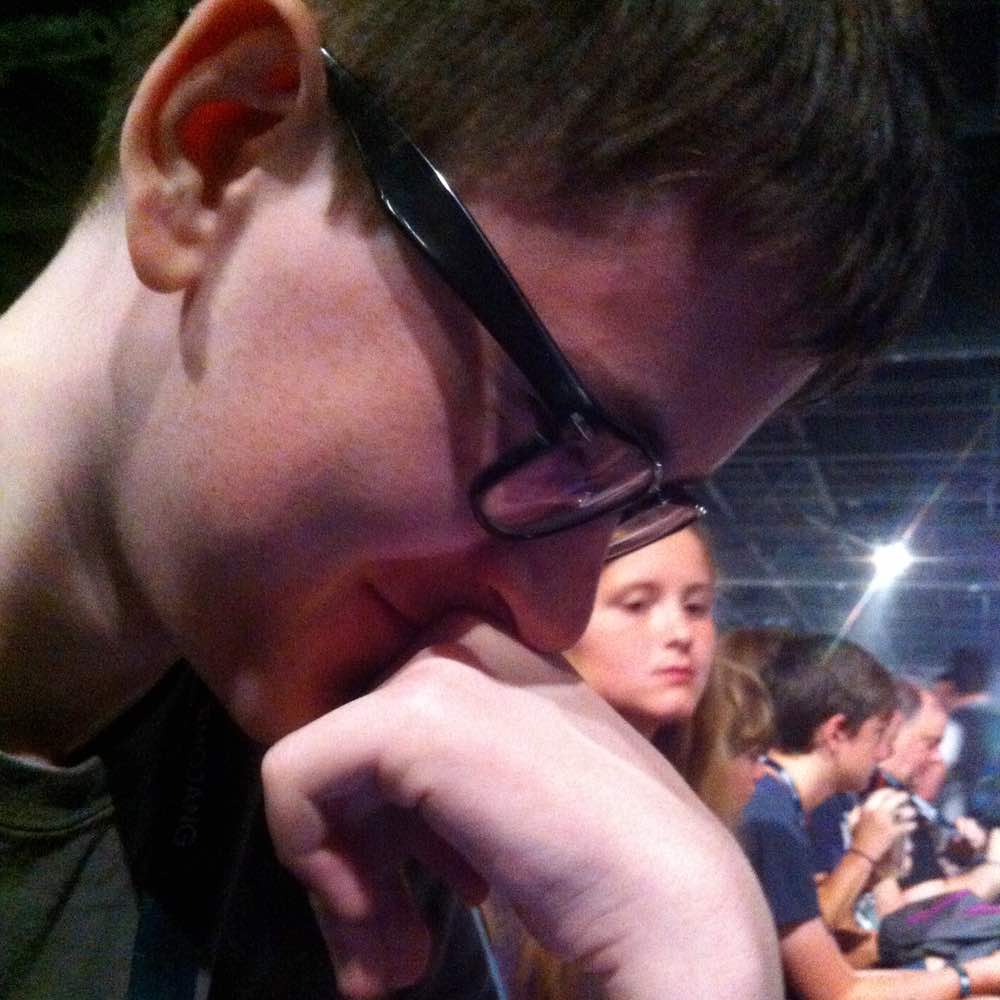
The big stages were set up in the South halls of the ExCeL, while the North halls held the Expo stands. There was a giant statue of Big Ben with an Ender Dragon wrapped around it in the centre of the Expo.

Abi and I split our time with Alex and Fiona, but they also decided that there were some panels and events they wanted to see on their own. Which was great – independence quests are paying off!
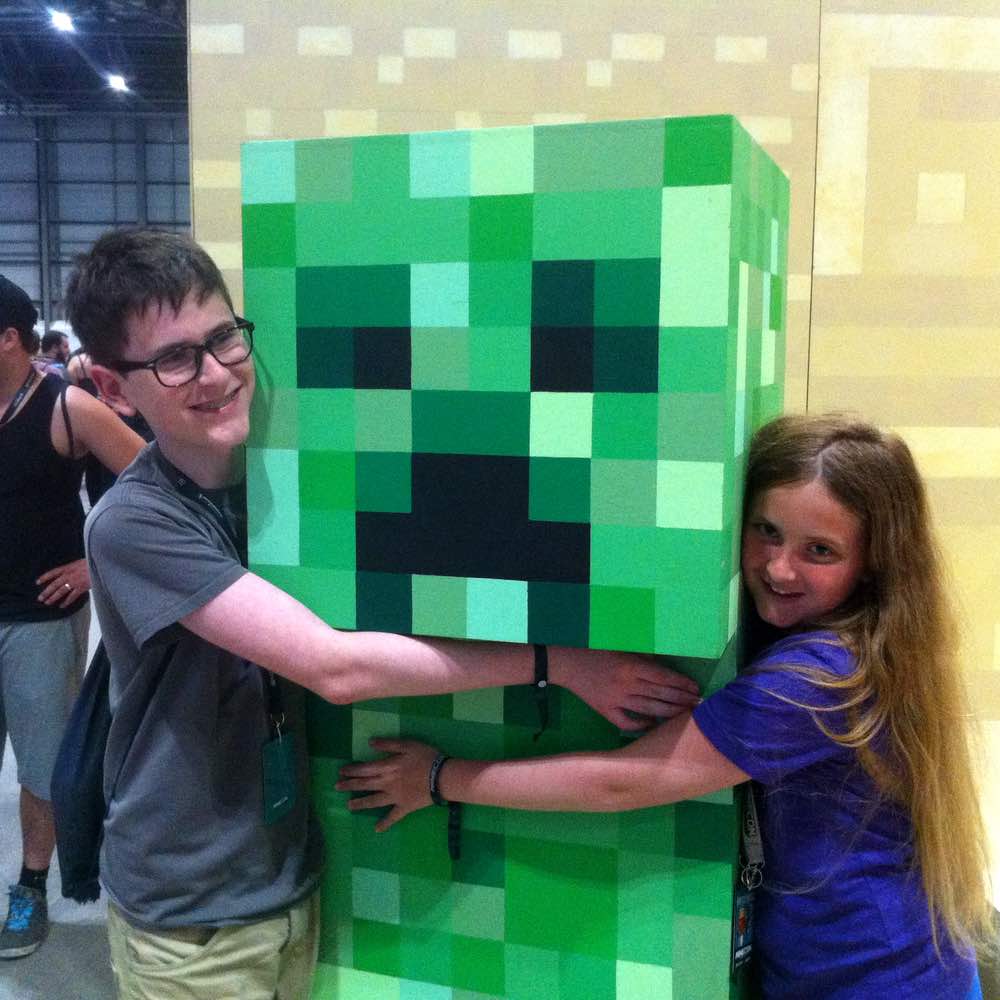
The evening entertainment was a fantastic Minecraft-themed live show put on by Cirque Bijou: dancing, synchronized trampolining, aerial silk, stunt bicycle tricks, and lots and lots of fire. It was pretty spectacular.
Friday 3rd July, we left for the London. (I find travelling immediately after a day of work yo be quite stressful – that afternoon was no different.) We drove to Schiphol, made our way through the traffic jam caused by protesting taxi drivers, and parked with the “holiday valet”. EasyJet to Gatwick, Gatwick Express to Victoria, pause at Victoria for a snack, District line from Victoria to Barking, walk to Barking Travelodge. It was after ten by the time we got there, and we collapsed into sleep pretty quickly.
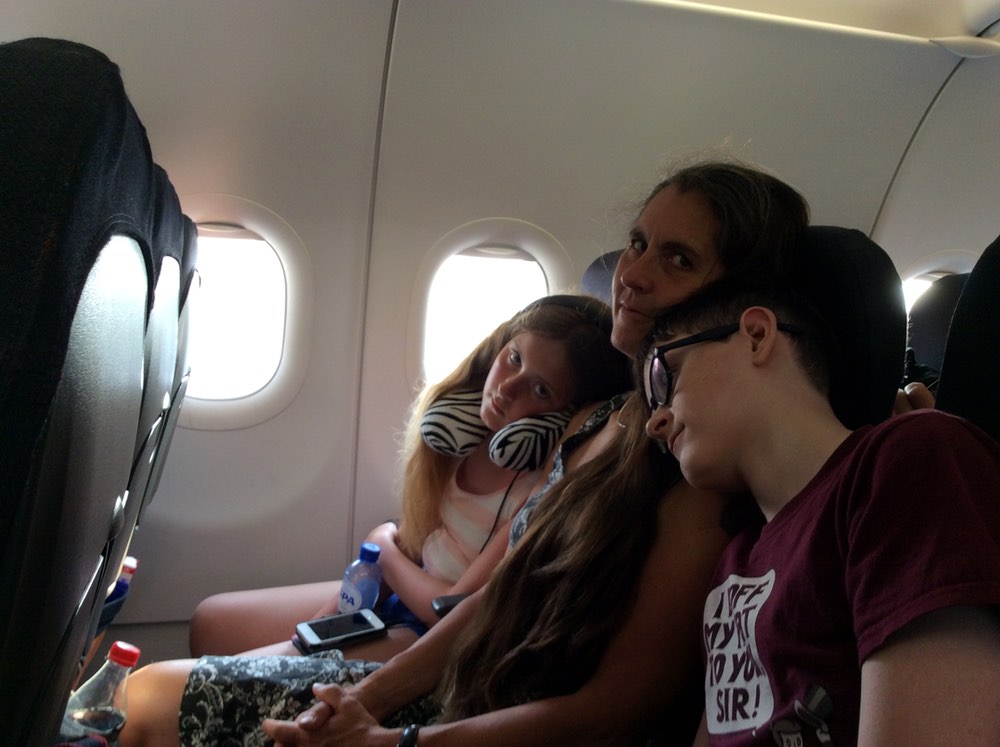
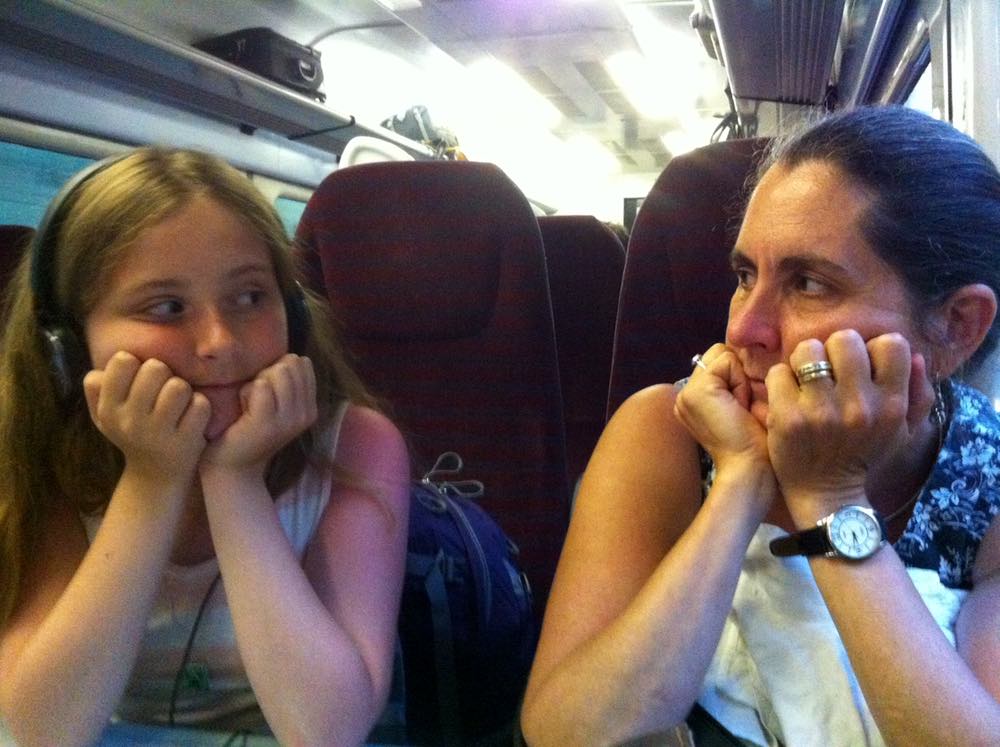
Not much time to write, just wanting to jot some things down:
This evening I finshed the first book I have read in months: Stuart MacBride’s latest Logan McRae book The Missing and the Dead. I’ve started loads of books recently, but nothing has kept my attention for more than a few pages. This was a good one, though.